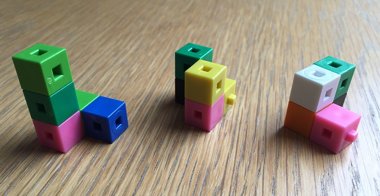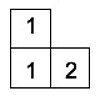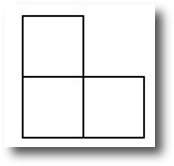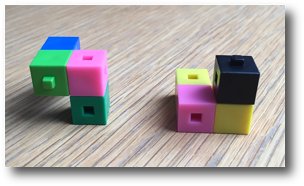Shape footprints
How many different shapes can be made with 4 cubes that will fit on this shape footprint (shown to the right)? What about 5 cubes?
There are more shapes than you may think, although some shapes will tip-over without support. You can decide whether to include these.
Once a group of children have found all the possible shapes, ask them to work in pairs.
They take turns to ‘explain’ their shape to their partner using only written instructions or drawings so that they can make the shape with cubes. These drawings can be their own invention and may be a little inaccurate - although they should be encouraged to try different methods.
Plans and elevations
Once children have explored their own recording of shape footprint models, demonstrate the drawings of front and side elevations alongside the plan. Talk about the reasons why these are useful as they show accurate representations of shapes.
Here is an example, using a shape made with 5 cubes:

Ten cubes
Children in pairs make a model with 10 interlocking cubes. They then make a card which shows their drawings of the plan, front elevation and side elevation of their shape. They take a photo of their shape to show the answer (this can be put on the back of the card). Once completed, the cards can be gathered together and used as a resource by the class.
Cities of 3D buildings
Here are two puzzles with a number of different solutions to them. Ask the children to find different shapes made with interlocking cubes that match each set of plans and elevations. These are kept and displayed as 'cities' of buildings with the same plans and elevations.
A.
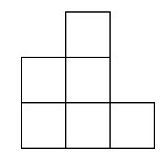
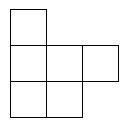
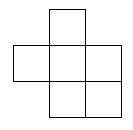
Plan Front elevation Side elevation
B.
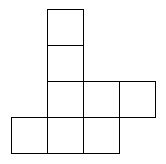
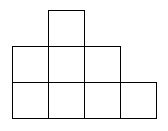
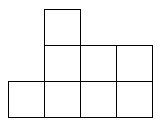
Plan Front elevation Side elevation


